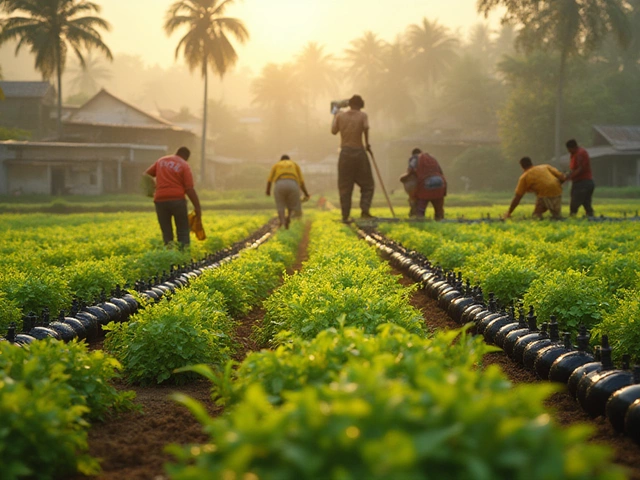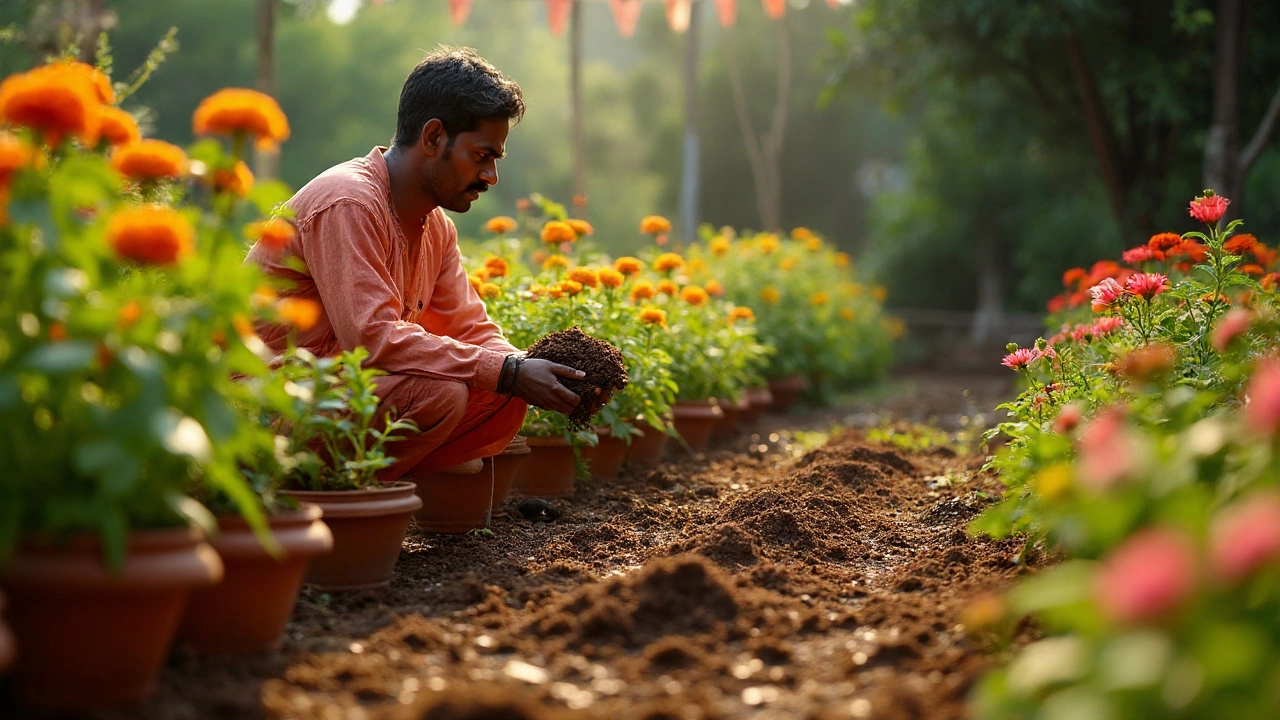How to Use Coffee Grounds in Your Garden
Got a pile of used coffee grounds? Instead of tossing them, turn them into a garden helper. Coffee grounds are cheap, easy to find, and packed with nutrients that can make your soil happier.
Mixing Grounds into Compost
One of the smartest ways to use coffee grounds is to add them to your compost bin. They act as a nitrogen source, balancing the carbon‑rich stuff like dried leaves. Just sprinkle a thin layer—about a quarter inch—over the compost pile and mix it in. Too many grounds can make the pile too wet, so keep the layers thin and alternate with dry material.
If you don’t have a compost bin, you can create a mini‑compost in a bucket. Add a handful of grounds, some kitchen scraps, and a bit of shredded newspaper. Stir every few days and you’ll have a nutrient‑rich mix ready for the garden in a few weeks.
Direct Soil Application
When you want a quick boost, spread coffee grounds directly on the soil around your plants. A thin dusting—no more than a tablespoon per square foot—helps improve soil texture and adds a bit of nitrogen. Work the grounds lightly into the top inch of soil so they don’t form a crust that blocks water.
Be careful with plants that prefer acidic soil, like blueberries and azaleas. Coffee grounds are slightly acidic, so they’re a good match. For neutral‑loving veggies, use them sparingly and watch the soil pH if you use a lot over time.
Pest Deterrent and Mulch
Many gardeners swear by coffee grounds to keep slugs and snails away. The gritty texture hurts the soft‑bodied pests, and the caffeine can act as a mild repellent. Spread a ring of grounds around vulnerable seedlings and reapply after heavy rain.
You can also use grounds as a light mulch. They retain moisture, suppress weeds, and slowly release nutrients. Just remember they decompose fast, so you may need to replenish the layer every few weeks during the growing season.
Making Seedling Boosters
For seed starters, mix one part coffee grounds with two parts potting mix. This gives seedlings a gentle nutrient boost without the risk of burning. Keep the mix moist but not soggy, and watch the young plants grow strong.
If you’re growing mushrooms, coffee grounds are an excellent substrate. They provide the right texture and nutrients for many edible mushroom species. Sterilize the grounds, add spawn, and you have a home‑grown mushroom kit.
Things to Watch Out For
Don’t overdo it. Too much coffee can make the soil too acidic or cause it to become compacted. Also, avoid using grounds that have been flavored or sweetened—they can attract pests or introduce unwanted chemicals.
Finally, store used grounds in an airtight container if you’re not using them right away. This prevents mold and keeps them fresh for the garden.
With these easy steps, you can turn everyday coffee waste into a garden asset. Grab a scoop, spread it, and let your plants enjoy the boost. Happy gardening!
Plants That Hate Coffee Grounds: What Not to Feed Your Garden
Wondering which plants can’t handle coffee grounds? Get the facts before using this ‘miracle’ in your garden—many plants will thank you for leaving it out.
About
Soil Improvement
Latest Posts


What Is the King of Flowers in India? The Sacred Lotus and Its Cultural Significance
By Alden Thorne Dec 2, 2025

How Often Should I Fertilize Tomatoes? Simple Timing for Big Harvests
By Alden Thorne Apr 21, 2025

Why Is Drip Irrigation So Expensive? Breaking Down the Real Costs and Saving Tips
By Alden Thorne Jul 22, 2025

